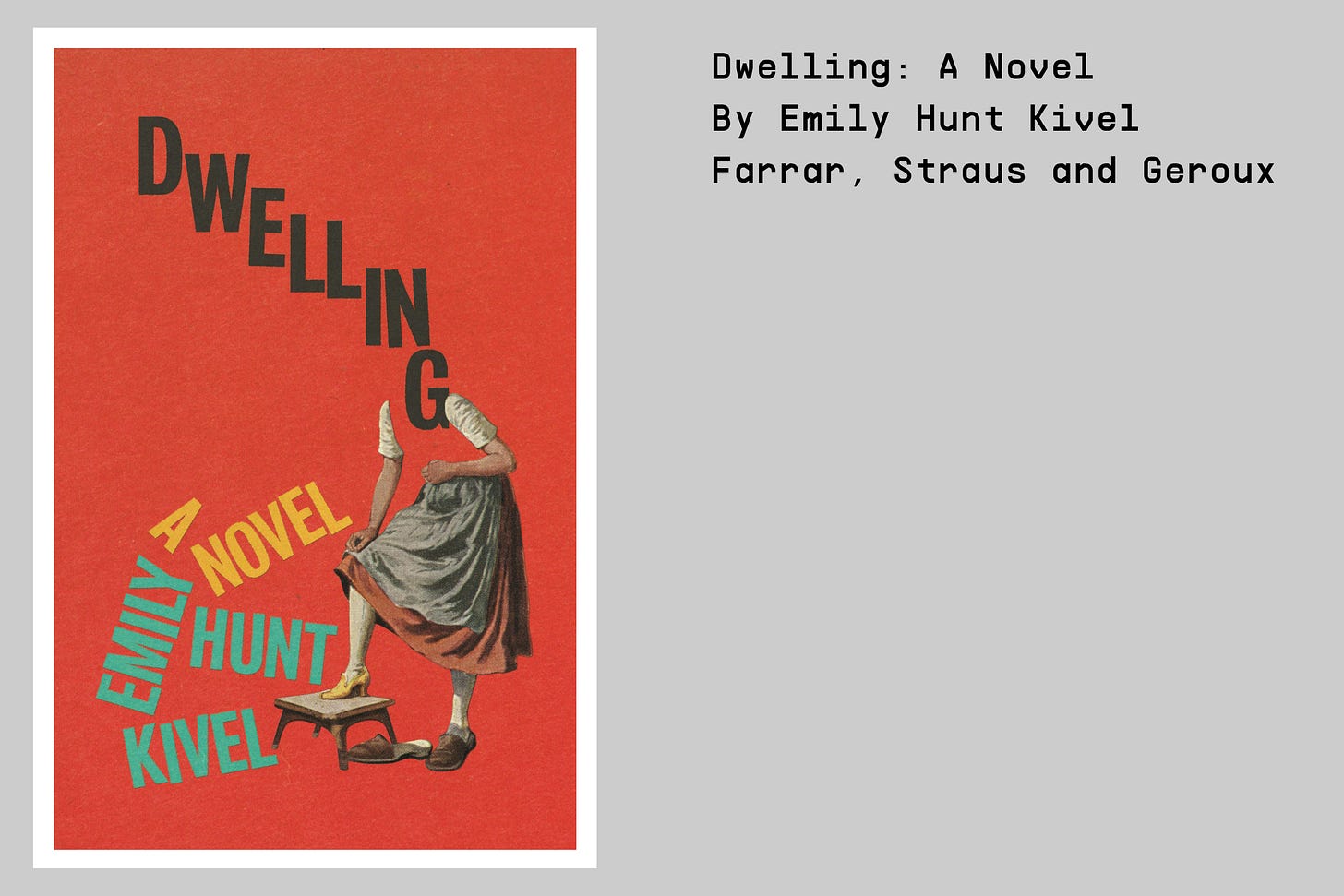Review | Dwelling: A Novel
Emily Hunt Kivel’s new book imaginatively considers the housing crisis.
By Monica Nelson
Much of 1970s Italian design consisted of objects that aimed to provoke conversation as well as function in a domestic space. These works, infused with theory and protest, were shaped by the growing global environmental movement. Pillow-y rocks designed by Piero Gilardi challenged people to bring nature indoors. The idiosyncratic coffee pots of Riccardo Dalisi sprayed scrap-copper stars from their sides. And Enzo Mari’s Autoprogettazione (or, “self design”) editions liberated readers from buying furniture and taught them to make their own. Shelter magazines at the time, like Casabella, became progressive platforms for discourse that, through colorful and playful juxtapositions, critiqued consumer society at large. The home’s interior became a space to manifest one’s politics and to reinvent how one lived.
Interior design as philosophical expression did not start in the 1970s. It was during the Victorian era that domestic objects became interlocutors—as people of all classes could hold a Wedgwood teacup, empowered by the vessel’s high-minded, encoded sense of ritual, and discuss emerging theories of social concern. The novel, at this time, also played a key role in shaping how people felt, and aspired to feel, in their homes. As people settled into an industrialized 9-to-5 lifestyle, they could escape to other worlds in their leisure time.
To skip to a near present, we land in the streets of Emily Hunt Kivel’s New York City. In her novel Dwelling, released by Farrar, Straus & Giroux in August, Kivel builds a world where the metropolis is littered with the personal effects of its inhabitants following a mass eviction. The city has transformed all monthly rentals into Airbnbs. Evie, the protagonist, traverses the detritus of thousands of lives, eventually taking up residence in a house shaped like a shoe in the fictional town of Bullock, Texas. Kivel uses the novel as a looking glass for the larger contemporary housing crisis—but its premise is also a philosophical question. As political actors, and as participant reimaginers of our world, our stuff and what shelters us is at closest reach. Dwelling asks its reader to consider a world in which objects laden with meaning no longer function; when the responsibility of reenvisioning how we live falls on each of us.
“Creativity is necessary to live,” Dalisi once said, “as it is to go beyond the boundaries that are imposed on us, because life has no boundaries. The border is only a stage, whose reason for existence is that it is to be crossed.” To live in a house shaped like a shoe has the campiness of a pillow-y rock in a living room—but it also takes the raw material of our world and reimagines it. Dwelling similarly asks readers to consider housing as a creative project at its most fundamental. How will we live? How will we reimagine our world in our present crisis? Perhaps it is fiction that can redesign the world for us; show us how to live and love and see something new.
Dwelling leaves us with three takes on how to proceed. One character listens, while another says that to make a key, one must understand the lock. Evie says, “Go quietly over mountains, down valleys, even through the doors of your enemies. Through bogs and woods and forests, and into the unknown.” ⌂
Monica Nelson is the author of Edible Flowers: How, Why, and When We Eat Flowers (Monacelli, 2021), These Long Shadows: Women’s History in House Museums in the American South (Atelier Éditions, 2025), and Antiques Today (Princeton Architectural Press, 2026), and is the founding photo and design director of Wilder Quarterly. She writes about history through the lenses of material culture, design, and nature.




So excited for this book! ...Unsettled, but excited.